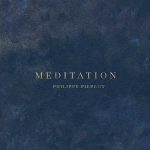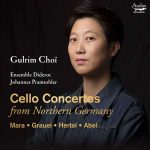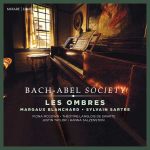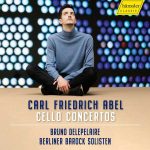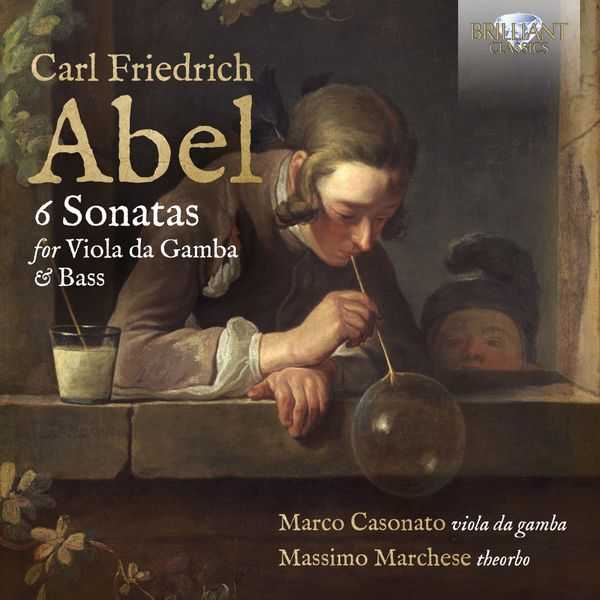
Composer: Carl Friedrich Abel
Performer: Marco Casonato, Massimo Marchese
Format: FLAC (tracks)
Label: Brilliant Classics
Catalogue: 96565
Release: 2022
Size: 295 MB
Recovery: +3%
Scan: cover
Sonata No. 1 in C Major, WKO 141
01. I. Vivace
02. II. Adagio
03. III. Minuetto
Sonata No. 2 in A Major, WKO 142
04. I. Allegro
05. II. Siciliano
06. III. Minuetto
07. Vivace in D Major, WKO 190
08. Piece in D Major, WKO 193 – Minuet for Viola da Gamba
Sonata No. 3 in D Major, WKO 143
09. I. Allegro
10. II. Adagio
11. III. Minuetto
Sonata No. 4 in G Major, WKO 144
12. I. Allegro
13. II. Adagio
14. III. Minuetto
15. Piece in D Minor, WKO 206 – (Minuet) for Viola da Gamba
Sonata No. 5 in A Major, WKO 145
16. I. Allegro
17. II. Andante
18. III. Minuetto
Sonata No. 6 in E Minor, WKO 146
19. I. Moderato
20. II. Adagio
21. III. Minuetto
22. Untitled Piece (Pembroke Manuscript) [in diesen heilig’n Hallen] for Viola da Gamba
Carl Friedrich Abel (1723-1787) was born in Köthen, a small German city, where his father, Christian Ferdinand Abel, had worked for years as the principal viola da gamba and cello player in the court orchestra. In 1723 Abel senior became director of the orchestra, when the previous director, Johann Sebastian Bach, moved to Leipzig. The young Abel later boarded at St. Thomas School, Leipzig, where he was taught by Bach (when Abel Sr died in 1737, Carl Friedrich was sent to live with the Bach family, who had by then moved to Leipzig). in Leipzig, Carl Friedrich had direct access to the grand master of invention and composition, and from him he learned the skills he would use to dazzle audiences in a career of improvised performances on the viola da gamba and harpsichord.
On Bach’s recommendation in 1748 he was able to join Johann Adolph Hasse’s court orchestra at Dresden, where he remained for fifteen years. After that he went to England and became chamber-musician to Queen Charlotte. In 1762, Johann Christian Bach, the eleventh son of J.S. Bach, joined him in London, and the friendship between him and Abel led, in 1764 or 1765, to the establishment of the famous Bach-Abel concerts, England’s first subscription concerts. In those concerts, many celebrated guest artists appeared, and many works of Haydn received their first English performance. From 1763 Abel shared also a house in London with Johann Christian Bach (whom he had known in Leipzig as a young man).
Abel’s Six Sonatas (WK 141–146) and the four Solos recorded here date from the 1770s, when this pioneering concert subscription series was at its peak. Relatively straightforward pieces, these Sonatas were written to attract enthusiastic amateurs of relatively modest ability on the instrument. While his aim may have been to entertain, Abel invested all his considerable melodic talents into these compositions. Taking inspiration from reports of Abel improvising and decorating in performance, the artists have elected to repeat the slow movements in ornamented versions. The continuo element of the Sonatas is also open to interpretation; the artists’ choice of theorbo was prompted by the historical idea that the instrument was still in fashion in late-18th-century London, even if unusual, and that aesthetically it is particularly suited to the intimate dimension of this music.
Of the four Solos, three come from the “Drexel Manuscript” composed of 27 varied solo viol pieces. They are much more demanding than the sonatas, containing wide leaps, lively bowings, intricate fingerings and chords and double-stops. The last solo piece, drawn from the Pembroke Manuscript held in the British Library, is an arrangement of Sarastro’s aria In diesen heil‘gen Hallen from Mozart‘s Die Zauberflöte. The arrangement asserts Abel’s poignant connection with Mozart: the young Amadeus copied and studied Abel’s symphonies during his brief stay in London as a child.
Marco Casonato plays a copy of a Jacob Steiner six-stringed viol.
